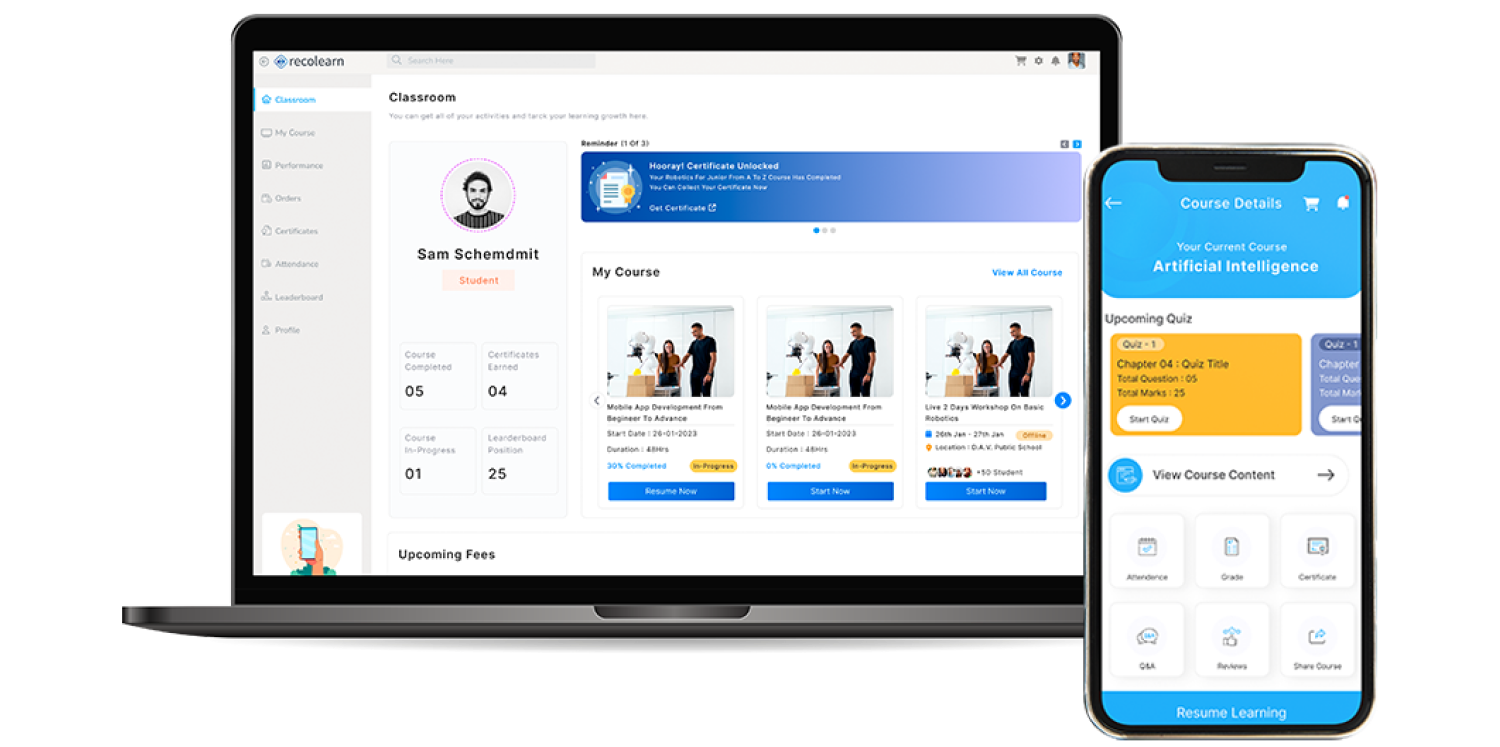Top LMS in India | Best Learning Management System
Transform Your Training Business with Smart AI-Powered LMS
Recolearn offers India’s best Learning Management System (LMS) for education & training. Build, sell courses, practice sets & workshops with smart AI tools.

Transform Your Training Business with Smart AI-Powered LMS
Empower your business with advanced Generative AI and Machine Learning technologies

Features
Build, Sell and Manage Courses with Our AI-Powered Platform
A complete platform for any training business

AI Assistant
Empower Your Learners with AI-Powered Assistance
Provide your learners with round-the-clock support using our AI-trained bots. Enhance their learning experience with instant and intelligent assistance.
- AI Based Learning Support
- Personalized Learning Experience
- Enhanced Engagement and Interaction
- Efficient Time Management
AI-Powered LMS
Save Time by Building Courses & Practice Sets within seconds with our AI-Trained Algorithms
Effortlessly create comprehensive courses in seconds using our advanced AI-trained algorithms. Save time and enhance productivity while delivering top-quality educational content.
- AI Course Content Generation
- AI Question Bank Generation
- AI Quiz / Practice Set Generation

Monetize Your Knowledge
Sell Courses, Practice Sets, Products, & Workshops all in one platform
Reach a global audience, share your expertise, and monetize your knowledge effortlessly. Recolearn empowers you to focus on delivering valuable content while maximizing your earning potential in the digital education landscape.
- Global Reach
- Effortless Monetisation
- User-Friendly Tools
- Maximised Earning Potential


Secure Non-Downloadable Content
Protect Your Courses: Safeguarded with Advanced Encryption and Secure Access
Ensure your courses remain secure with advanced encryption and non-downloadable content, providing peace of mind while delivering valuable learning experiences online. Protect your intellectual property and maintain control over course distribution with our secure platform features.
- Intellectual Property Protection
- Secure Access
- Enhanced Trust and Credibility
- Controlled Distribution
Franchise Management
Effectively manage multiple branches or franchisees with customized contractual agreements.
Effectively oversee multiple branches or franchisees with tailored contracts designed to meet unique operational needs and ensure consistency across your network. Streamline administrative tasks and enhance operational efficiency with our customizable contract management feature.
- Centralized Management
- Consistency and Standardization
- Improved Communication
- Efficiency and Cost Savings

A Smart LMS Customized for every Training business
Education Industry
Recolearn personalizes learning with analytics, automation, and engagement tools.
Fitness Industry
Transforms fitness with personalized plans, real-time feedback, and streamlined management tools.
IT Industry
Recolearn offers flexible, trackable skill training with certifications, analytics, and tool integration.
Finance Industry
Recolearn boosts finance education with learning paths, assessments, and certification automation.
Manufacturing Industry
Delivers standardized, interactive training that ensures compliance, boosts productivity, and cuts costs.
Healthcare Industry
Improves healthcare quality through training, knowledge updates, accessibility, compliance, and efficiency.
Upscale Your Training Business Today
Boost learner engagement, streamline course delivery, and drive measurable growth effortlessly and smartly.

